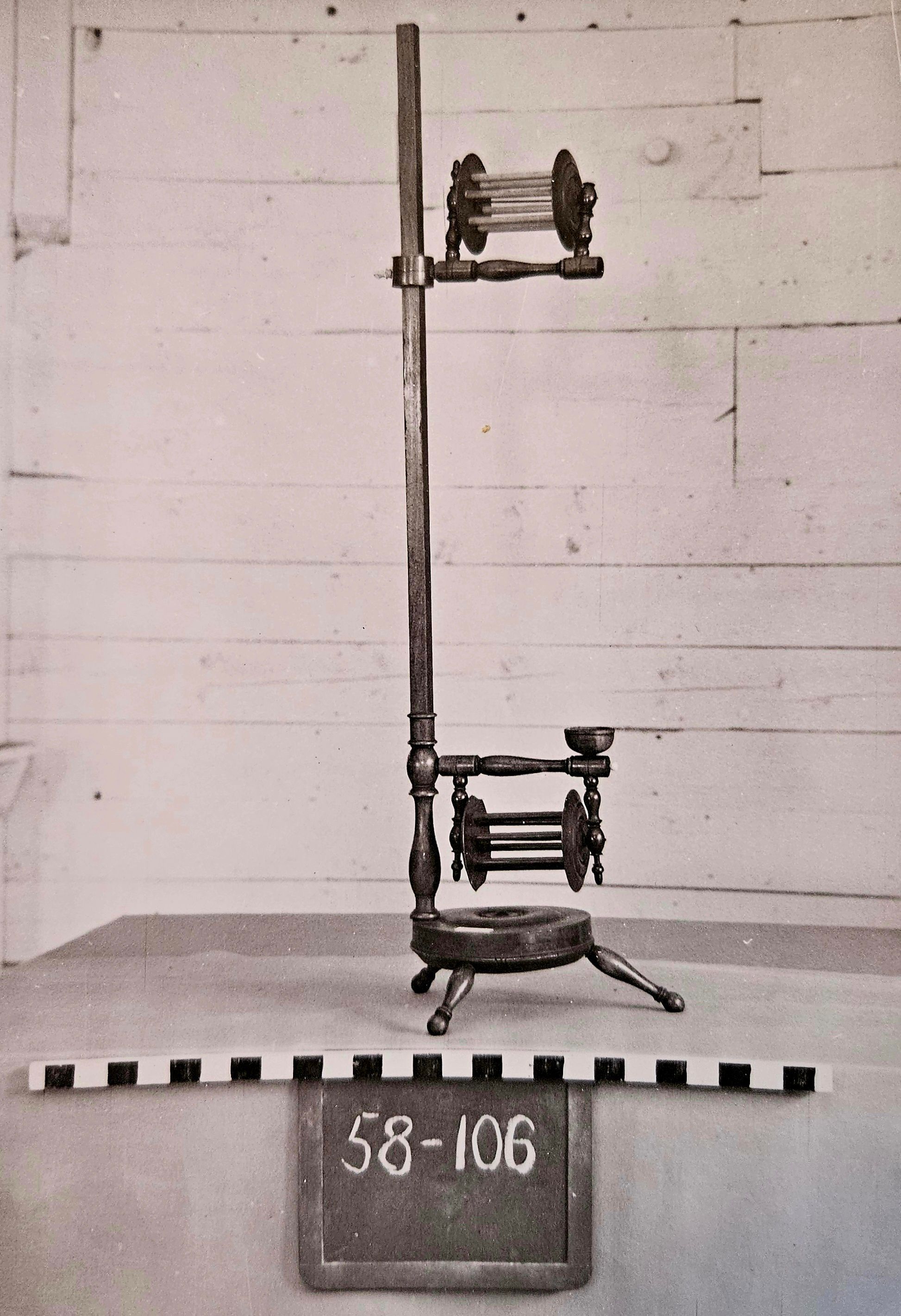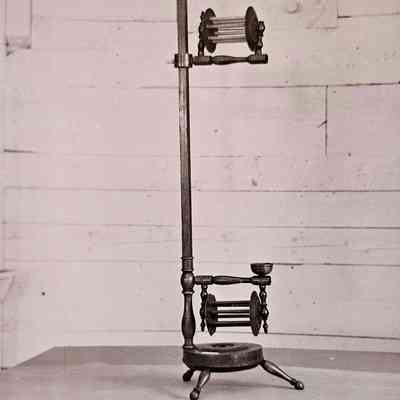Name/Title
Floor SwiftEntry/Object ID
2017.01.16Description
Floor swift, squirrel cage type. Probably 18th-century European. A parlor sift, delicate and beautifully made. The cup for holding a ball of yarn is on the lower cage bracket. One wooden and one ivory ball are missing, also an ornament is missing from the top of the post. Delicate and graceful lathe work showing both face turning and side turning. The upper cage is adjustable by means of an ivory set screw. There is a small ivory ball on the end of the lower bracket arm and a wooden cup for holding a ball of yarn during interruptions in the process of winding. Wood not identified. A turned circular base 6 1/2" x 1 1/2" is supported on threesplayed turned legs 4" long and supports a vertical upright 32 1/4" tall; the lower 7 1/2" are turned, the rest square. There are two turned horizontal arms 6 1/2" long, the lower one fixed, the upper one movable. Each arm supports a squirrel-cage reel 4" wide with wooden spokes and a wire axle, playing between delicately turned posts 4" high. The lower arm has an ivory ball at its end and a small wooden cup on its upper surface. The upper arm has a turned ivory key for adjustment of height.Use
Swifts were used for winding thread and yarn.Context
Preindustrial textile technology.Collection
American Textile History Museum CollectionLexicon
Nomenclature 4.0
Nomenclature Secondary Object Term
SwiftNomenclature Primary Object Term
Winder, YarnNomenclature Sub-Class
Textile Manufacturing EquipmentNomenclature Class
Textileworking T&ENomenclature Category
Category 04: Tools & Equipment for MaterialsOther Names and Numbers
Other Numbers
Number Type
ATHMOther Number
1959.1.200Number Type
ATHMOther Number
1958-106Dimensions
Height
35-1/2 inWidth
10 inLength
10 inMaterial
Hardwoods, Ivory, VarnishLocation
Location
Exhibit Room
Mill Manager's Parlor Exhibit* Untyped Location
Main Museum BuildingCategory
ExhibitDate
April 5, 2025Condition
Overall Condition
FairCondition Detail
Badly worm-eaten bench and legs. Chipped cage end. Legs and feet worm eaten. Something missing from top of upright, perhaps an ivory ball. The wings of the ivory key are broken off. Loose joints. One wooden and one ivory finial are missing.Date Examined
Apr 4, 2025Provenance
Provenance Detail
Donated to ATHM in 1959 as part of the S. D. Stevens Collection, although ATHM record cards also show dates 1963 and 1970.Created By
historian@millmuseum.orgCreate Date
April 5, 2025Updated By
historian@millmuseum.orgUpdate Date
April 5, 2025
